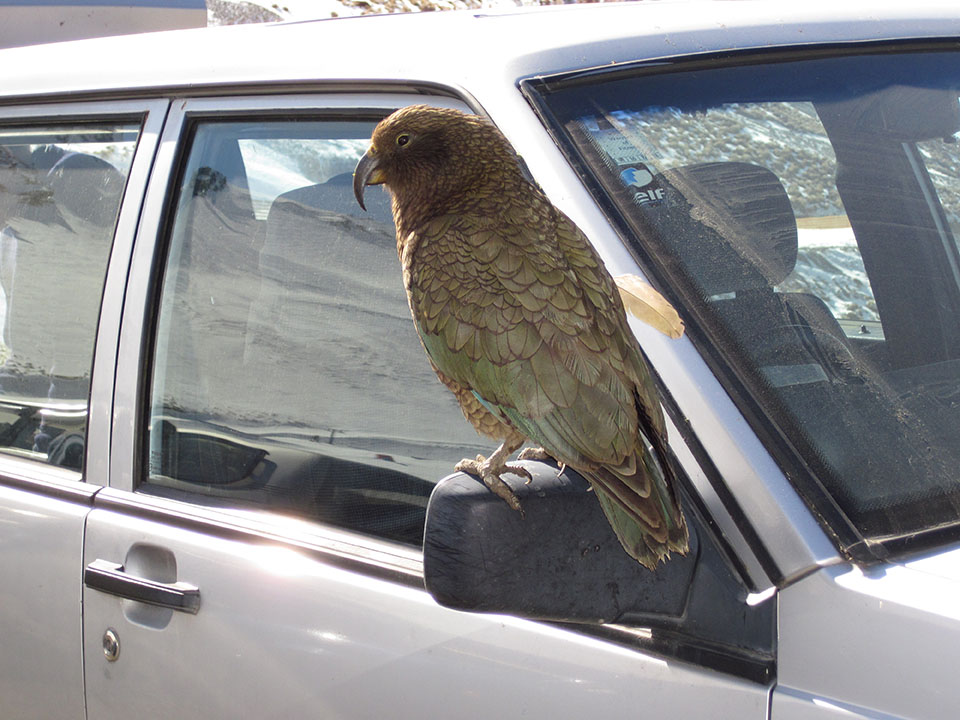You can contact LEARNZ, part of CORE Education, at:
Postal Address:
PO Box 13 678,
Christchurch 8141,
New Zealand
Kea are considered by researchers to be the most, or at least one of the most, intelligent bird species in the world.

Kea are known for their intelligence, curiosity and playful behaviour. Because of this there has been many studies on kea, both in the wild and in captivity. Research has been done here in New Zealand and overseas. Vienna University along with the Vienna University of Veterinary Medicine have set up their Kea Lab research facility with 20 resident kea which is dedicated to finding out more about kea intelligence.
Work is also being done here in New Zealand. A study by Canterbury University Masters student Rachel Johnston has shown that kea can outperform gibbons in some intelligence tests.
Rachel tested 21 wild kea from Mount Hutt ski field as well as captive kea. A series of tests with a see-through cylinder, a piece of string and a kea treat of cheese was set up.
The birds worked out that they needed to keep the string anchored under one foot as they hauled up the cheese. They also found out how to use a lever on the cylinder to get at the food. Rachel was surprised at how quickly they were able to work out how to get the cheese.
Ability differed a lot between birds, and young kea seemed to enjoy the tests the most.
Kea have often been observed using tools in the wild, even setting off stoat traps with sticks after watching DOC staff set the traps.
It is this intelligence and curiosity that has led to conflict between kea and people.
Kea are attracted to new objects in their environment and food. Their strong beaks and claws mean they can be very destructive, ripping rubber trims on cars and damaging outdoor equipment.

When in kea country you should:
Complete the Kea intelligence quiz >
Design your own intelligence test activity for kea and explain how you will measure success.